Medical anatomical illustration - the history of the study of the human body in atlases of 5 centuries. Part 3
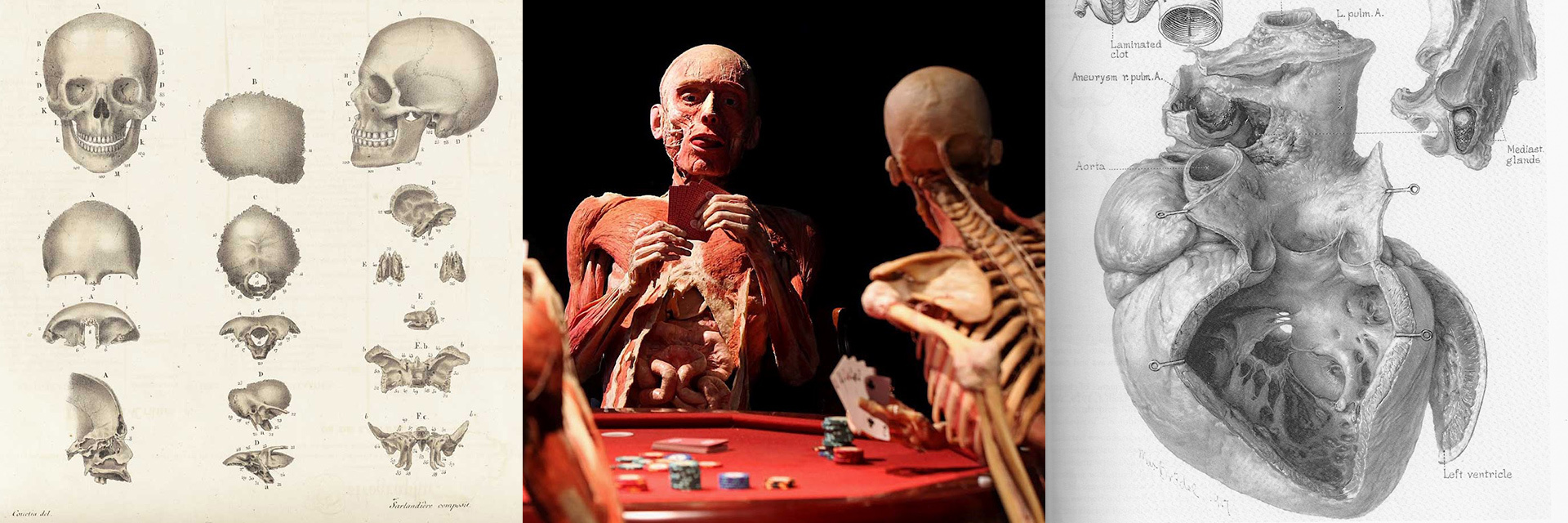
We continue a series of posts about anatomical illustration. Last time they talked about the XVII and XVIII centuries , and even a little earlier about the end of the Renaissance and Andreas Vesalius . This issue will feature the first atlas of pathologies, the most popular and republished anatomical textbook in the world by Gray, as well as the person who subsequently designed the anatomical illustration in a separate profession.
In the XX century, the world of biomedical illustration has become a peculiar, but integral part of the scientific and educational community. On the other hand, this peculiarity has led to the emergence of very ambiguous figures among anatomists and illustrators.
XIX century: atlases of pathologies and anatomy of Gray
The development of anatomical illustration in the XIX century is associated not only with the achievements of medicine, but also with significant progress in publishing. Atlases, manuals, and textbooks are printed everywhere, and anatomists, physiologists, and medical illustrators are no longer concentrated in Italy, France, the Netherlands, and Britain. At the beginning of the century, the lithography method was being actively introduced , which greatly simplified the publication of illustrated books. Lithography does not require the work of a specialist engraver, and also makes it much easier to get a grayscale image. All this made it possible to create picture books, which became slightly cheaper than the cast-iron bridge.
Among the atlases of the first half of this century, the works of the anatomist Jean-Baptiste Sarlandier can be distinguishedwhich were made in collaboration with the artist J. Bisby. Their atlas was called Systematized Anatomy or Human Organography and was published in New York in 1837.
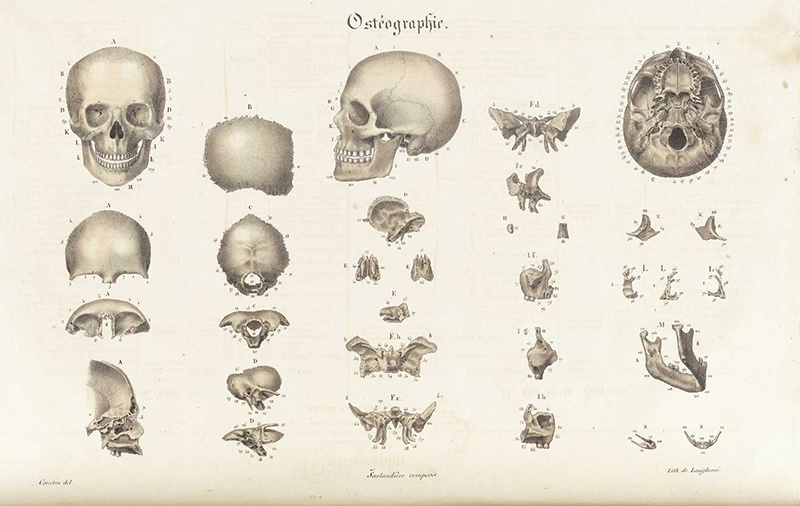


Illustrations from Systematized Anatomy or Human Organography ( source ).
Another detailed and well-illustrated atlas was published several years later and was called “ Atlas d'anatomie descriptive du corps humain ”. Constantine Louis Bonami, Paul Broca and Emile Bo worked on it.
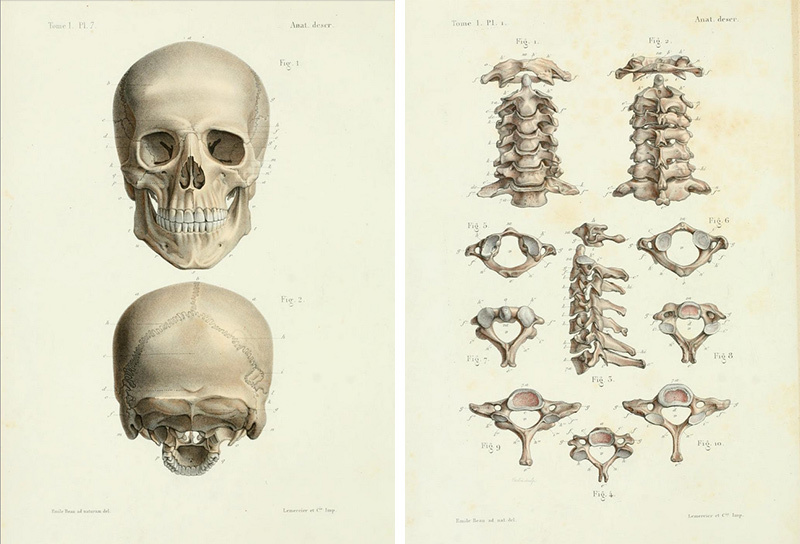
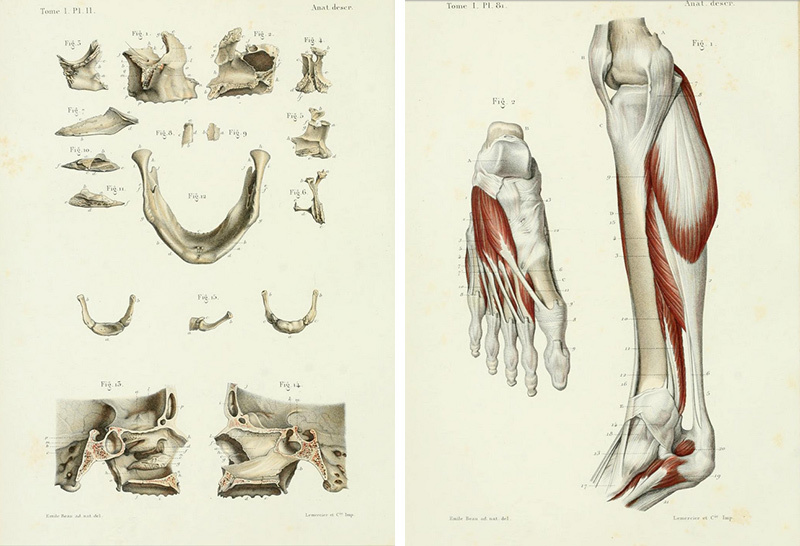
Illustrations from the Atlas d'anatomie descriptive du corps humain ( source ).
Atlases on pathological anatomy are also published in the first half of the 19th century. A vivid example is the book “Pathological Anatomy Illustrations of the Elementary Forms of Disease”, written by Scottish professor Sir Robert Carswell in 1837.
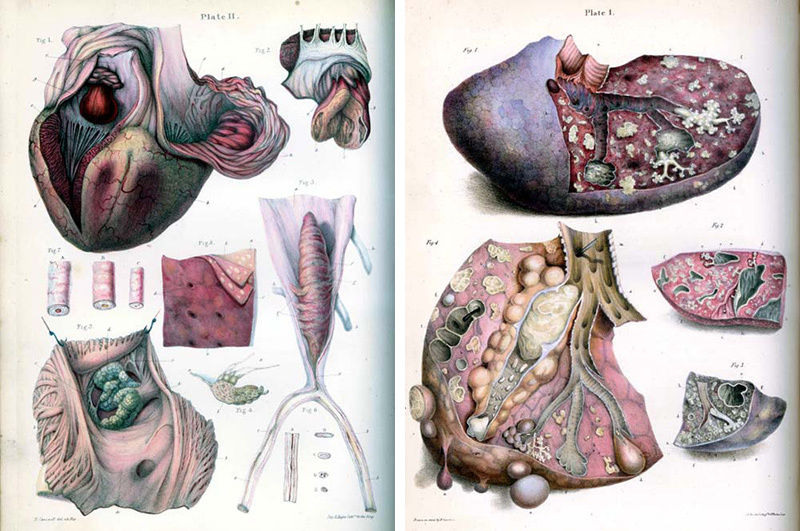
Illustrations from the Pathological Anatomy Illustrations of the Elementary Forms of Disease ( source ).
But perhaps the most notable event in the history of world medical illustration of the 19th century was the publication of the textbook Gray 's Anatomy: Descriptive and Surgical Theory . This happened in 1858 in Great Britain. Co-authors of the book and illustrations were the anatomists Henry Gray and Henry Vindyk Carter. Henry Gray died of smallpox three years later, at the age of 34, but his atlas has withstood many editions in the UK and the USA, and now continues to appear in the form of mobile applications. Some publications are freely available on the Internet .

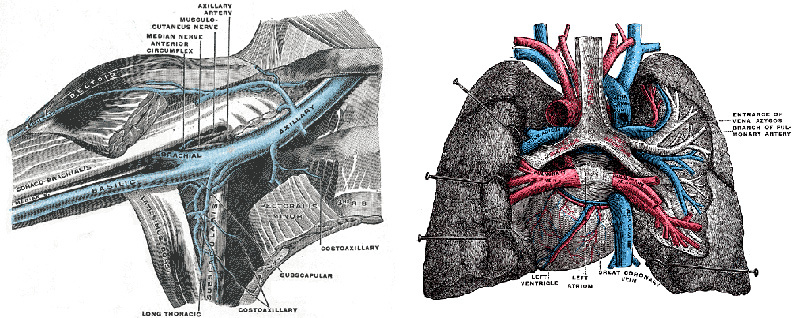
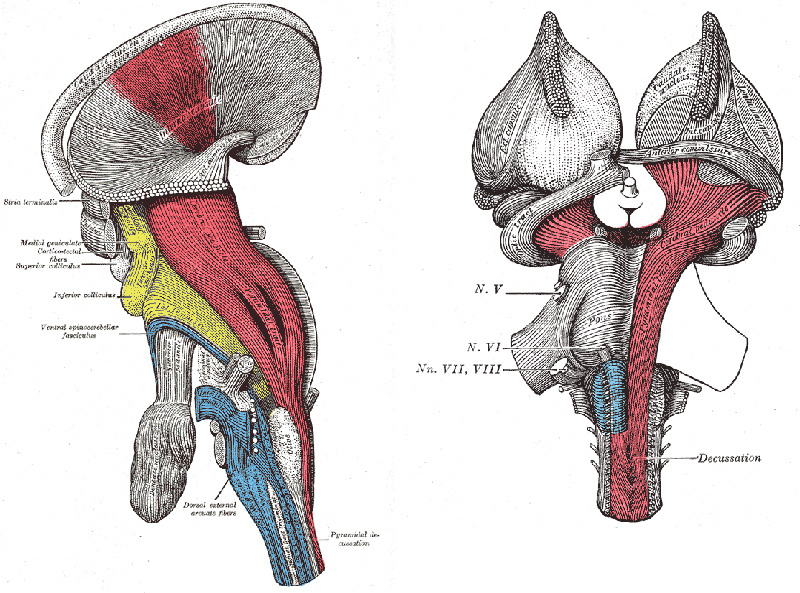
Illustrations from Gray's Anatomy of the Human Body 1918 Edition ( source ). I must say that, despite the popularity of Henry Gray's manuals, the illustrations in them are not the most interesting.
However, in the story about 19th-century manuals, one cannot go past Nikolai Ivanovich Pirogov, the most outstanding Russian surgeon, scientist and teacher. For educational and scientific purposes, he made cuts of frozen human corpses., as well as layered cutouts, allowing to see one or another whole organ surrounded by other frozen tissues. Pirogov's “Ice Anatomy” has become one of the most interesting, original, and powerful methods for studying the human body, which was later addressed. Although the work itself of Pirogov and his colleagues took place in difficult conditions and very cold rooms. An atlas was created on the basis of ice sections, which is called "Illustrated topographic anatomy of cuts drawn in three directions through a frozen human body." His German edition of 1855 is freely available . You can also download the Russian-language edition .
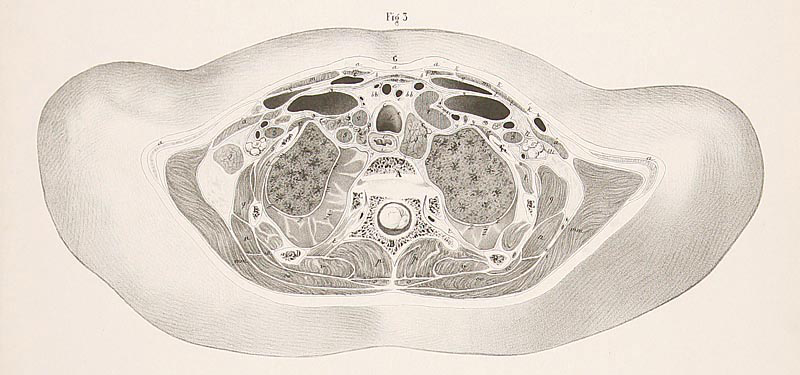
One of the illustrations from the Pirogov atlas.
For other, less famous atlases and medical illustrations of the 19th century, see these links:
Topographisch-anatomischer Atlas. Nach durchschnitten an gefrornen Cadavern herausgegeben (1875)
Prints Old & Rare
It is also impossible not to say that in the 19th century they invented photography, which, it would seem, was supposed to solve all the problems with the realism of images, including anatomical preparations. However, after its appearance, the medical illustration not only did not disappear, but, on the contrary, began to develop more actively. This is primarily due to the fact that the artist can create a much more understandable diagram or illustration in which he will put emphasis in the right way, paying attention to the main parts and muffling minor ones. We will talk about photographic atlases below - they cannot do without hand-drawn illustrations.
XX century: the profession of medical illustrator and conflicting Germans
A conversation about the 20th century must begin with the mention of Max Braudel . Braudel is a medical illustrator who emigrated from his native Germany to the USA and was accepted into the staff of Johns Hopkins Medical School in 1890 . In his works, he used the technique of “ drawing with coal powder ”, which turned out to be very realistic, allowing you to accurately transmit halftones. However, drawing in such a technique involves replication by modern methods, for example, using offset printing. Drawing with carbon powder better than the photograph conveyed details and provided greater tonal latitude. Braudel is also famous for organizing the world's first department of medical illustration at Johns Hopkins University.

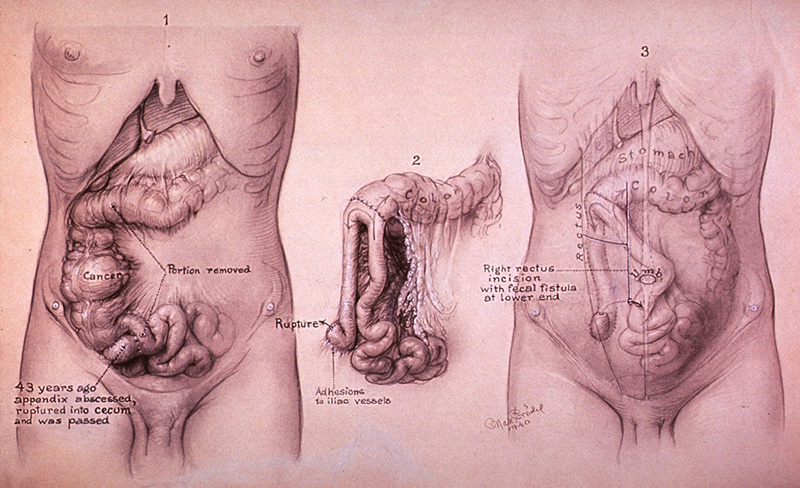

Illustrations by Max Braudel ( source)
Many anatomical atlases of the beginning of the XX century were distinguished by striking detail and accuracy. Here are some examples:
“ An atlas of human anatomy for students and physicians ”
“ Hand atlas of human anatomy ”
“ A laboratory manual of human anatomy ”
In the 20th century, medical illustration finally took shape as an independent profession. We have already mentioned the Medical Illustrators Association , which was founded in 1946. It is also worth noting that there are specialized institutes where this profession is taught. One of them, located in London, is called the Institute of Medical Illustrators . It was founded in 1968.
In the last century, many atlases were published. Examples can be found at this link .
We will tell you more about some names. One of the most famous anatomical atlases of the 20th century was created by a group of illustrators under the leadership of the professor of anatomy from the University of Vienna Eduard Pernkopf. Work began in 1933 and took four years. The illustrators were Erich Lepier, Ludwig Schrott, Karl Endresser and Franz Batke. The Pernkopf Atlas was striking in its accuracy, accuracy and detail. However, later in society a very contradictory attitude towards the creators of the atlas and the process of working on it developed. Firstly, during the Second World War, all the artists who worked on the atlas actively supported the Nazis and were members of the NSDAP. Batke was even injured on the Eastern Front and was awarded the Iron Cross. Schrott and Endresser also served in the army; only Lepyr escaped this due to health reasons. But a more serious rebuke to the authors was that, according to some reports, they could be used as models for sketching during work on the atlasbodies of victims of Nazi concentration camps.
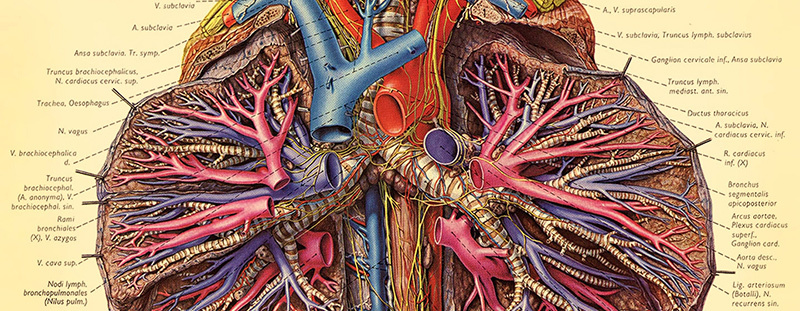
Illustration from the Pernkopf Atlas ( source ).
An absolutely not so odious, but also very noticeable figure in the medical illustration of the 20th century was the American surgeon and artist Frank Netter . Netter, in his early youth, became interested in drawing and, while still in high school, made illustrations for newspapers and magazines, but his parents insisted that the young man begin a career in medicine. Netter had to combine two professions during the Great Depression in the United States, when medical practice proved to be of little demand and unprofitable. Subsequently, Netter collaborated with the most famous and largest publishing houses and created about 4,000 anatomical illustrations.

Netter's illustrations ( source)
The most used Soviet atlas in the 20th century was the atlas edited by R.D. and Ya.R. Sinelnikovs (his first edition was written in collaboration with V.P. Vorobiev ). Students of medical and biological specialties are still studying on it. Anatoly Alekseev became an illustrator of the later editions of the atlases. For some reason, we managed to find information about this only on the website of the Seventh-day Adventist organization.
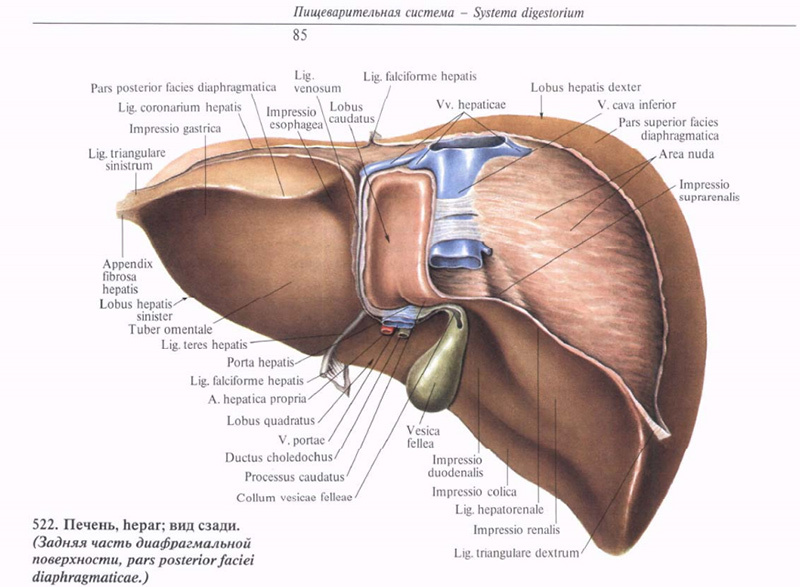
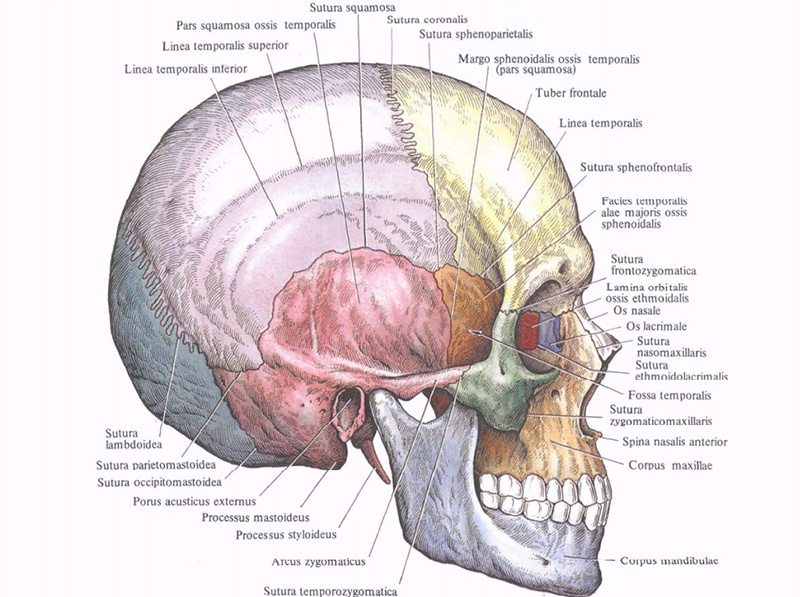
Illustrations from the atlas of the Sinelnikovs.
Another figure worth mentioning is Gunter von Hagens.. His work is a cross between the manufacture of voluminous anatomical aids, embalming and provocative art. Von Hagens is famous for inventing the technique of plastination - impregnation of biological tissues with a hardening polymer to preserve them in a form that is as close as possible to the native one. This allows us to make stable and durable models from partially prepared human bodies and their parts. Of these, von Hagens makes a kind of sculptural group, whose expositions often cause a stormy public reaction.
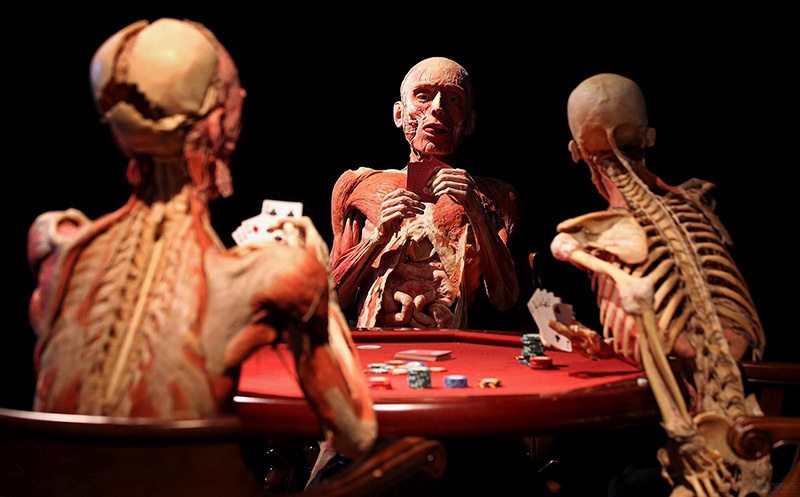
Photograph of one of von Hagens' works (taken from here )
Of course, with the spread of color photography, anatomical atlases began to appear, in which instead of pictures were photographs. One of the most famous is called “Color Atlas Of Anatomy: A Photographic Study Of The Human Body . ” Such atlases give a realistic picture, but the diagram can depict the averaged structure of one or another organ, while each human body is individual, which can be fraught with atypical features in photographs of one or another part of the body.
Based on photographs of sections of the body, you can assemble a complete and very accurate model of the human body. One and a half centuries after the ice anatomy of Pirogov, this was done as part of the “ The Visible Human Project ” project . Two people, one of whom was a Texas death sentencedand the other is a middle-aged housewife who remains unknown. Their bodies were frozen in a mixture of water and gelatin. Based on the preparations, cross sections were made with an interval of 1 mm, which were then photographed. The photographs were used to create complete models of male and female human bodies. However, they also could not give an ideal idea of human anatomy, since the structure of the organs of individual people may differ slightly from the norm and have not the most characteristic parameters.
We will end with the 20th century, and we have the last series in which we will talk about the current state of anatomical illustration, mobile applications on anatomy, three-dimensional modeling, as well as share thoughts and comments of famous modern scientific illustrators.
Other posts in the series:
Part One
Part Two
Conclusion
